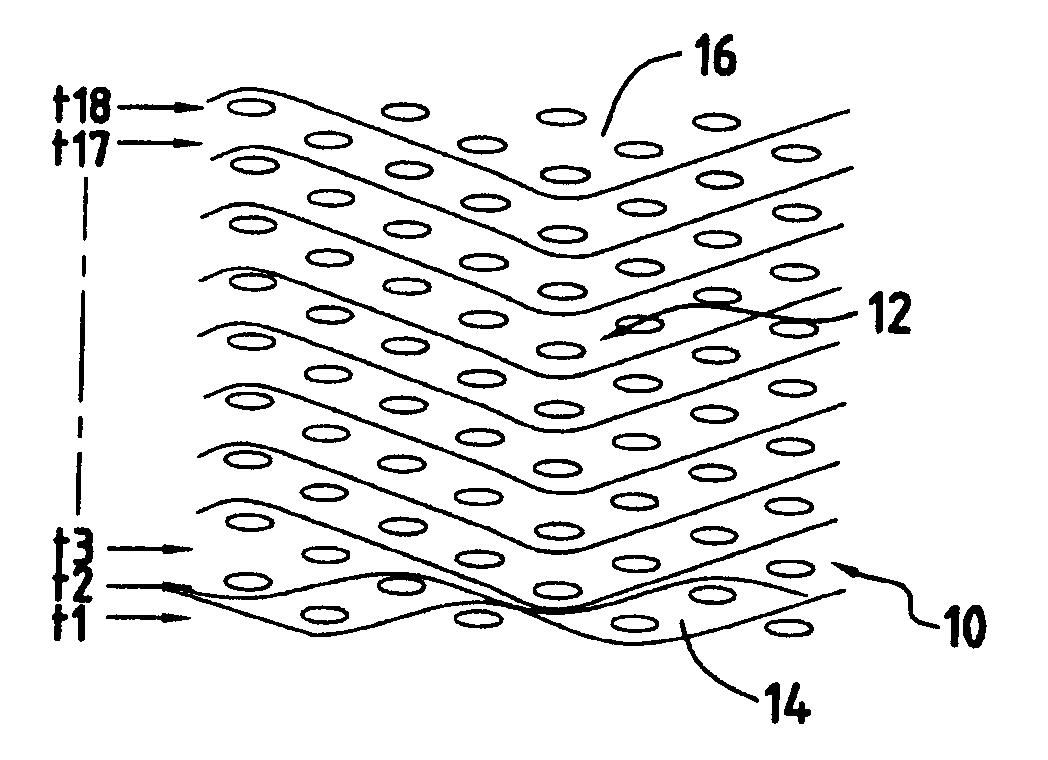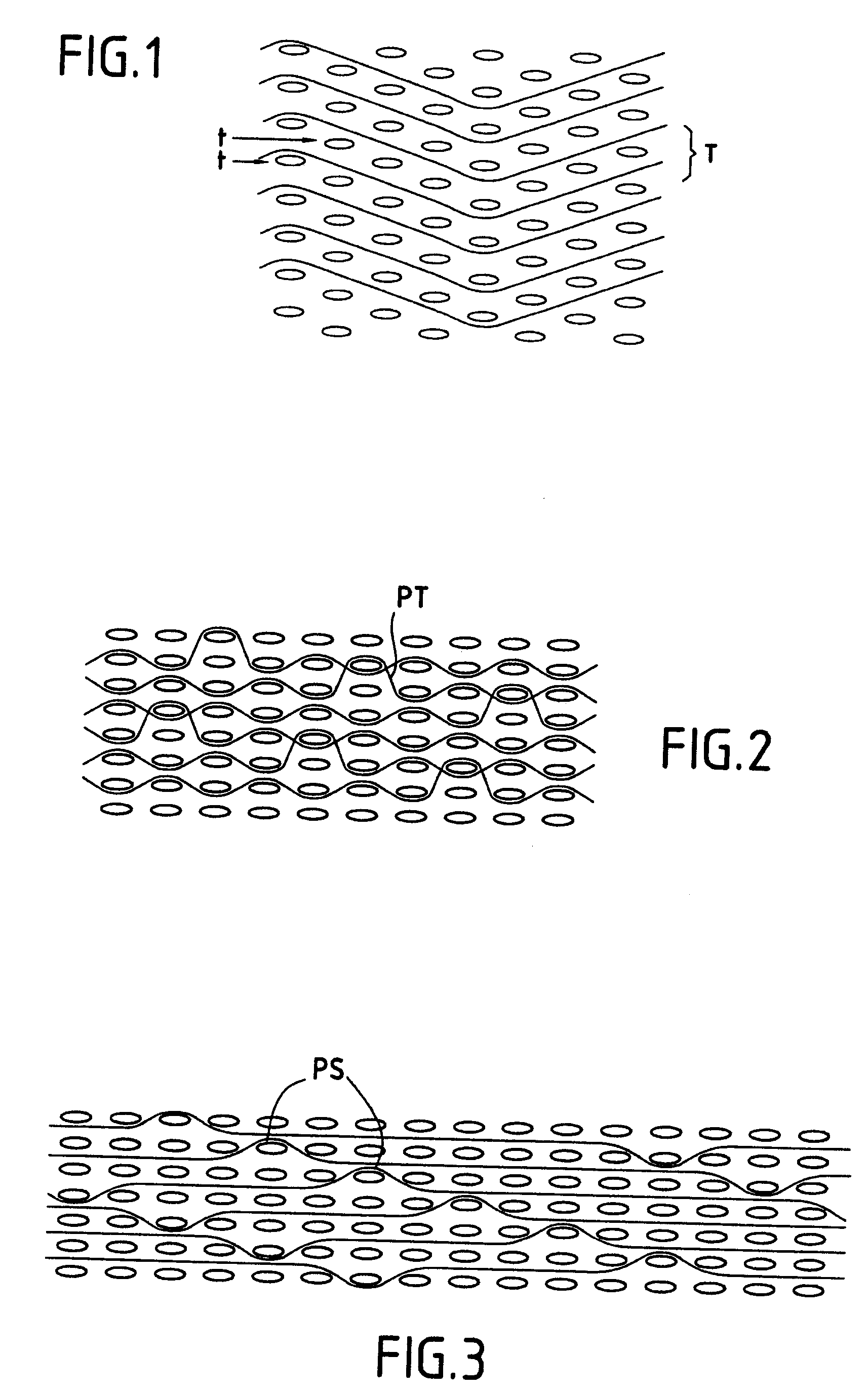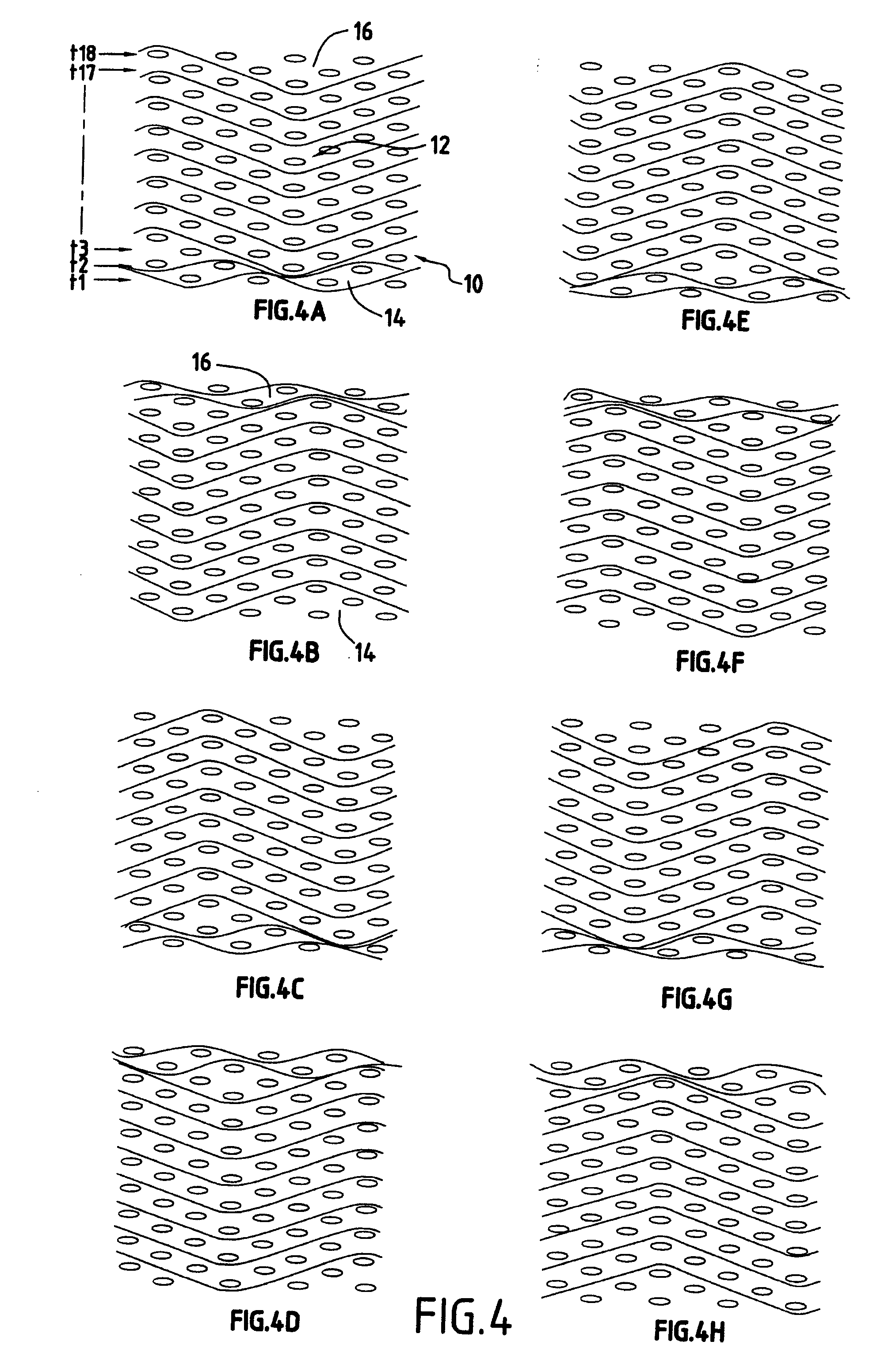Reinforcing fibrous structure for a composite material and a part containing said structure
a fiber structure and composite material technology, applied in weaving, other domestic articles, transportation and packaging, etc., can solve the problems of affecting the quality of the composite material, and affecting the mechanical properties of such parts
- Summary
- Abstract
- Description
- Claims
- Application Information
AI Technical Summary
Benefits of technology
Problems solved by technology
Method used
Image
Examples
example 1
Not Covered by the Claims
[0066]FIGS. 4A to 4H show portions of eight successive planes of a fiber structure weave obtained by 3D weaving, the weft yarns being visible in section.
[0067]The fiber structure 10 comprises nine weft yarn layers, i.e. eighteen half-layers t1 to t18. In the core 12 situated between two opposite skins 14 and 16, the 3D weaving is of the interlock type with a 10 / 10 count per layer (ten yarns per centimeter in the weft and warp directions). In the skins 14 and 16, the weaving is two-dimensional with a plain type weave with a 5 / 5 count per layer. The plain weave applies only to half-layers t1 and t2 and to half-layers t17 and t18 of weft yarns. It should be observed that the 3D interlock weave of the core extends to the outermost half-layers t1, t18 of the skins so as to bond these half-layers to the core layers.
[0068]In this example, the methods of weaving and the counts vary between the core and the skins. The plain weave skin encourages obtaining a surface s...
example 2
[0069]FIGS. 5A to 5H show successive planes of a fiber structure weave 20 obtained by 3D weaving, said structure differing from that of Example 1 in that in the skins 24, 26, the weaving is a satin weave with a 5×5 count and involves only the outermost half-layers of weft yarns t1 and t18, while the weave of the core 22 is of the interlock type with a 10×10 count per layer.
[0070]In this example, the method of weaving varies between the core 22 and the skins 24, 26, the skin satin weave giving a smooth surface appearance.
example 3
[0071]FIGS. 6A to 6J show a portion of the successive planes of a fiber structure 50 obtained by 3D weaving, using an interlock weave in the core 52 and a multilayer weave at the skin. The interlock weave is made with each warp yarn extending over a depth of two half-layers of weft yarn. The multilayer weave at the skin 56 is made with a multiple satin type weave having a pitch of 5, uniting an external weft layer formed by two half-layers with an adjacent weft half-layer.
[0072]Only a portion of the weave is shown, it being possible to increase the number of weft layers as represented by dashed lines, and the skin opposite to the skin 56 not being shown, the weave of said opposite skin possibly being of the same type as that of the skin 56.
PUM
| Property | Measurement | Unit |
|---|---|---|
| temperatures | aaaaa | aaaaa |
| thickness | aaaaa | aaaaa |
| structure | aaaaa | aaaaa |
Abstract
Description
Claims
Application Information
 Login to View More
Login to View More - R&D
- Intellectual Property
- Life Sciences
- Materials
- Tech Scout
- Unparalleled Data Quality
- Higher Quality Content
- 60% Fewer Hallucinations
Browse by: Latest US Patents, China's latest patents, Technical Efficacy Thesaurus, Application Domain, Technology Topic, Popular Technical Reports.
© 2025 PatSnap. All rights reserved.Legal|Privacy policy|Modern Slavery Act Transparency Statement|Sitemap|About US| Contact US: help@patsnap.com



